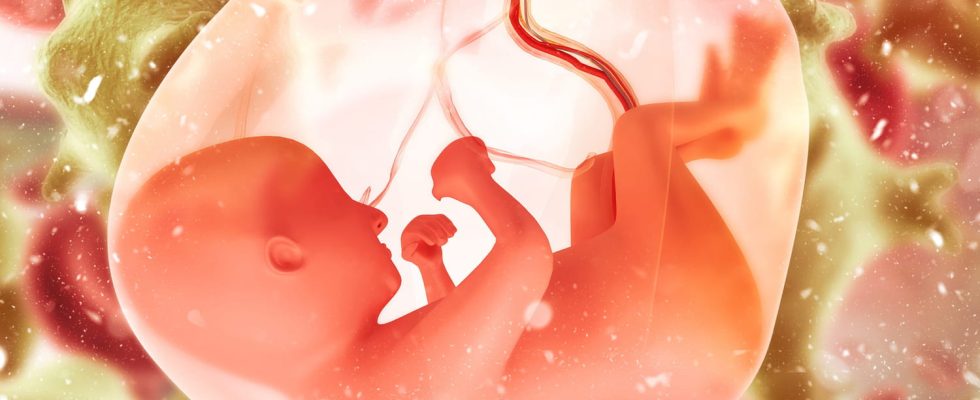Diaphragmatic (dome) hernia affects approximately one in 3,500 to 5,000 births per year. This malformation of the diaphragm is rare. What are the symptoms ? The treatment ? A surgery?
What is the definition of a diaphragmatic hernia?
Diaphragmatic dome hernia affects approximately 1 in 3,500 to 5,000 births per year. This is’a congenital malformation which is due to an abnormal closure of the diaphragm. This prevents the separation between the abdomen and the thorax allowing the viscera to enter the thoracic cavity, thus compromising the development of the lungs. In 70-80% of cases, the hernia occurs on the left side.
What are the symptoms of a diaphragmatic hernia?
“When the baby is in utero, he does not need his lungs to breathe because he is connected to the umbilical cord. At birth, these children cannot breathe on their own. If we can predict the volume of the lungs prenatally thanks to ultrasound, we cannot anticipate how the lungs will function after birth.e”, explains Alexandra Benachi, professor of gynecology-obstetrics, member of the Rare Disease Reference Center: Diaphragmatic dome hernia
What causes a diaphragmatic hernia?
The origin of diaphragmatic hernia remains unknown. According to Pr Benachi, the causes of diaphragmatic hernia are rarely hereditary, and more sporadic. “Sometimes the hernia can be associated with gene or chromosome abnormalities such as trisomy 18, but it’s still rare.” It is also very rare, but possible, that the hernia does not manifest until adulthood during coughing, pushing, or infection.
Who to consult in case of diaphragmatic hernia?
In utero, these are fetal medicine obstetricians who care for the fetus and its mother. At birth, the resuscitator takes care of the infant. Once operated by a pediatric surgeon, and stabilized, the baby passes in pediatric surgery or general pediatrics. Reference centers exist in Lille, Clamart and Marseille.
What exams to diagnose a diaphragmatic hernia?
“During pregnancy, the diagnosis is made whenone of the screening ultrasounds offered during pregnancy. In some cases the hernia can be seen in the first trimester but the diagnosis is most often made in the second trimester. A amniocentesis to search for possibly associated chromosomal abnormalities is proposed”, explains Alexandra Benachi.
What are the chances of survival?
In all forms, there are 60% chance of survival. However, some children may present with respiratory, neurological or, more rarely, orthopedic sequelae. “When they are very young, it is recommended not to enroll them in a crèche to prevent them from catching respiratory viruses. Often, the first three years are more complicated, but once the three years are over, the children have an almost normal life“, assures Professor Benachi. However, “depending on the measurement of the lung, the position of the liver and the side of the hernia – it is more serious if it is positioned on the right – in some cases we know that nothing can be done“
What is the treatment for a diaphragmatic hernia?
Only surgery can treat diaphragmatic hernia because it helps put the abdominal viscera back in place and close the diaphragm.
When to consider the operation?
“Children with a mild form are operated on from the first days. Otherwise, it is necessary to wait until the infant is stabilized to operate. In the most severe forms, some are operated on in utero. In utero surgery was the subject of two very large international trials last year and today it is systematically offered to parents..”
Thanks to Pr Alexandra Benachi, gynecologist-obstetrician member of the Rare Disease Reference Center: diaphragmatic dome hernia (Paris Saclay Hospital Group. – Bicêtre/Antoine Béclère)
